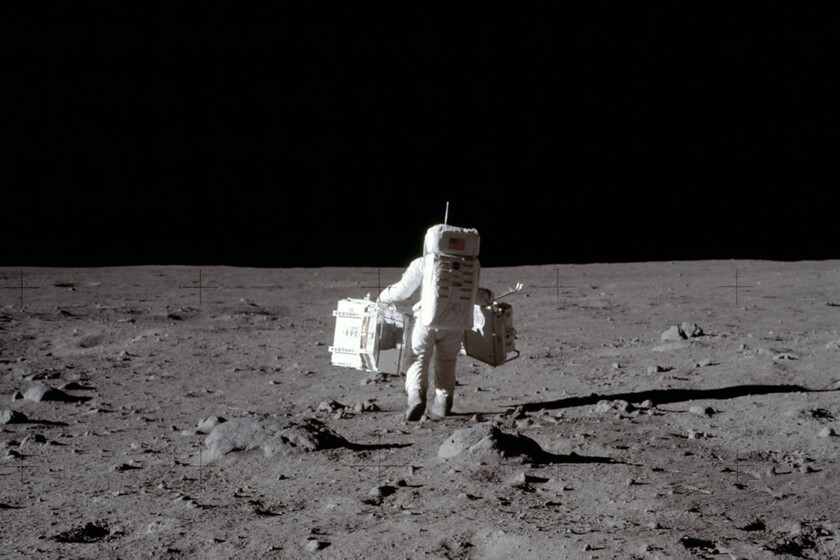The Moon is relatively smaller than the Earth and there is also six times less gravity. With these two characteristics, one can think that a hypothetical return to the satellite by walking it’s not that complicated. More or less, let’s see how long such a feat would take.
Here on Earth, taking into account that the planet has a circumference of about 40,000 kilometers and that on average a human walks at 5 km / h … it would take about 330 days. Of course, without stopping and without taking into account that there are oceans in between. On the Moon there are still more complications to consider. We recently saw what it would be like to talk in space, now the hypothetical exercise is on how to walk on the Moon.

The factors to consider
In a hypothetical exercise to see how long it would take to walk around the Moon, a series of factors must be taken into account. As reported in LiveScience, speed, gravity or lunar relief are some of the things that determine the total time. Let’s look at these factors:
- Velocity: Probably the most important factor of all, the speed at which the astronaut can walk on the Moon. So far the 12 NASA astronauts who have walked on the Moon have done so at an average speed of 2.2 km / h. It’s a very low speed, although it was partly due to the unadapted spacesuits (perhaps better with those from SpaceX). Supposedly with suits in better condition and with the lunar gravity six times less than the Earth’s, an astronaut could walk at around 5 km / h.
- Relieve: On the Moon, there are no oceans to go around, but there are gigantic craters that are sometimes better not to approach. Therefore, the final time would be strongly increased by all the craters that would have to be surrounded on the walk.
- Meteorological conditions: At the Moon’s equator, temperatures of up to 100 degrees Celsius can occur during the day and as low as -180 degrees Celsius at night. To cope with such temperatures, we assume that the astronaut would be well protected with his space suit. However, even if that were solved, it must be taken into account that low temperatures also affect the lunar surface, making it sometimes more difficult to walk on it.
- Radiation: Assuming drastic temperature changes aren’t a problem, another thing the astronaut should protect himself from is radiation. On the Moon, there is no atmosphere to protect against radiation and if a storm or solar flare occurs during your walk, you will have to deal with the radiation coming by interrupting your walk to get to safety.

- Physical condition and supplies: If our astronaut is immune to temperatures, radiation and does not care about the relief … there is one last factor to take into account: how long it takes to get tired. Walking is tiring, and even more so in a place like the moon where we have to go equipped with oxygen cylinders and a space suit weighing several kilos. On the other hand, there is the issue of supplies for the trek, you would have to take a small rover to transport food, water and more oxygen.
Taking all these factors into account, we can do a quick math exercise to see how long it would take for our astronaut to go around the Moon. If you walk at 5 km / h and taking into account that the moon is 10,921 km in circumference, it would take 91 days to complete the return to the Moon. Now, due to the environmental conditions we assume that he would walk only about four hours a day and that he would have to deal with the odd crater, in which case the 91 days go up to about 540 days.
Via | LiveScience

